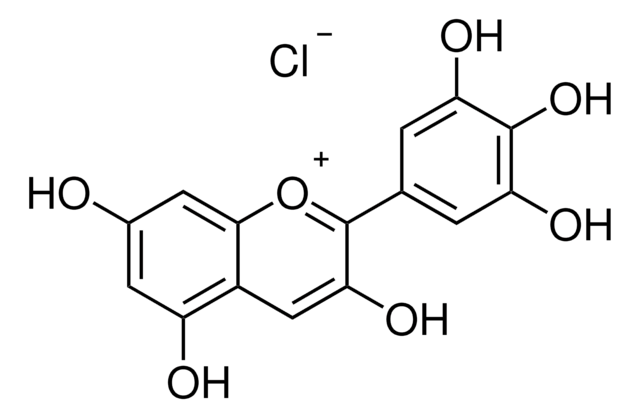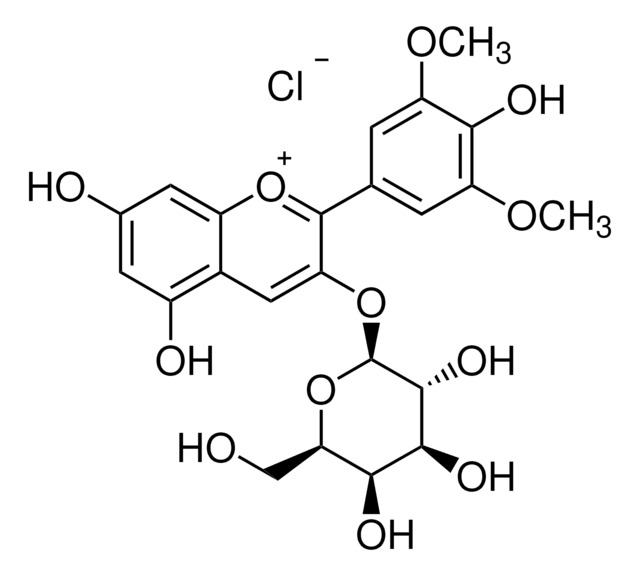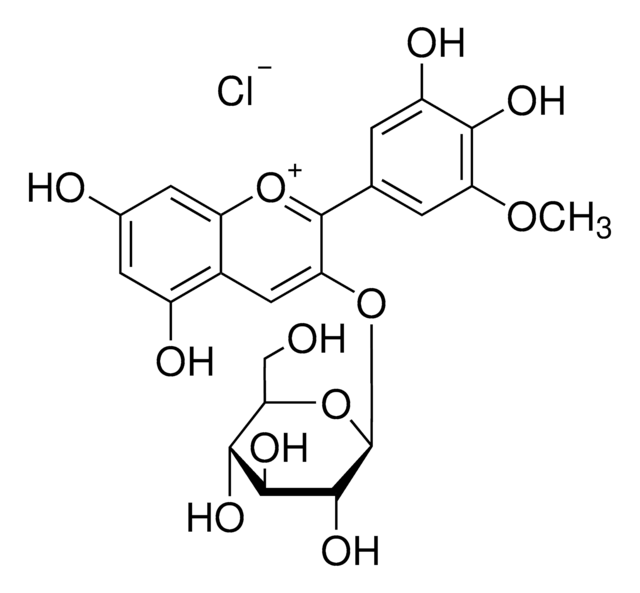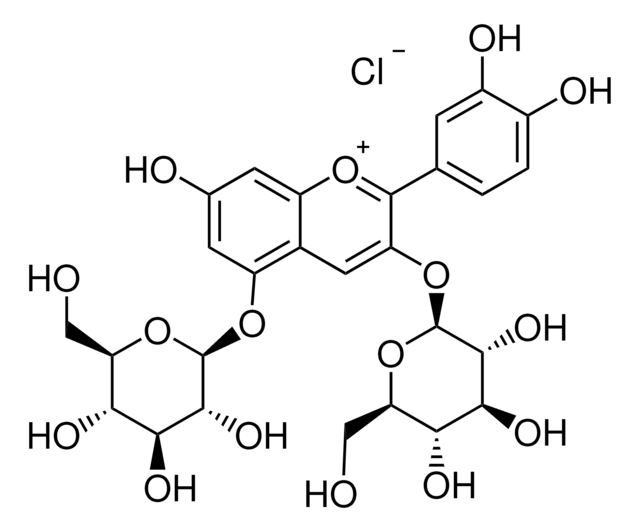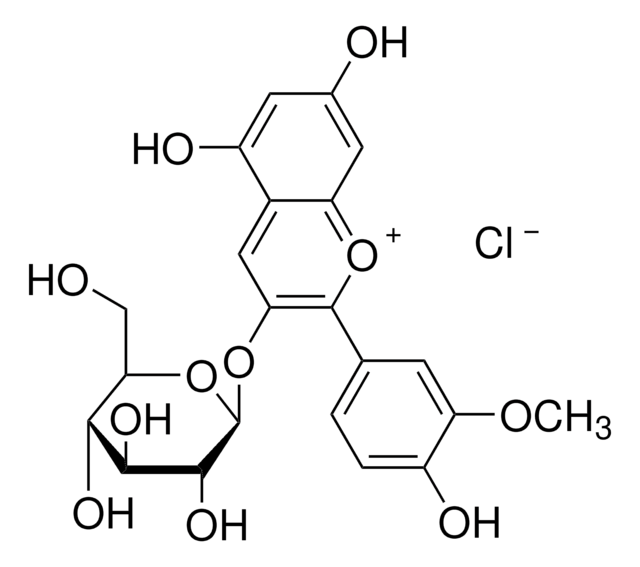68120
Malvidin chloride
≥95.0% (HPLC)
Synonim(y):
3,4′,5,7-Tetrahydroxy-3′,5′-dimethoxyflavylium chloride, Malvidin, Oenidin chloride, Primulidin chloride, Syringidin chloride
About This Item
Polecane produkty
Próba
≥95.0% (HPLC)
Zastosowanie
metabolomics
vitamins, nutraceuticals, and natural products
ciąg SMILES
[Cl-].COc1cc(cc(OC)c1O)-c2[o+]c3cc(O)cc(O)c3cc2O
InChI
1S/C17H14O7.ClH/c1-22-14-3-8(4-15(23-2)16(14)21)17-12(20)7-10-11(19)5-9(18)6-13(10)24-17;/h3-7H,1-2H3,(H3-,18,19,20,21);1H
Klucz InChI
KQIKOUUKQBTQBE-UHFFFAOYSA-N
Szukasz podobnych produktów? Odwiedź Przewodnik dotyczący porównywania produktów
Powiązane kategorie
Opis ogólny
Zastosowanie
Działania biochem./fizjol.
Opakowanie
Kod klasy składowania
11 - Combustible Solids
Klasa zagrożenia wodnego (WGK)
WGK 3
Temperatura zapłonu (°F)
Not applicable
Temperatura zapłonu (°C)
Not applicable
Środki ochrony indywidualnej
Eyeshields, Gloves, type N95 (US)
Certyfikaty analizy (CoA)
Poszukaj Certyfikaty analizy (CoA), wpisując numer partii/serii produktów. Numery serii i partii można znaleźć na etykiecie produktu po słowach „seria” lub „partia”.
Masz już ten produkt?
Dokumenty związane z niedawno zakupionymi produktami zostały zamieszczone w Bibliotece dokumentów.
Klienci oglądali również te produkty
Produkty
Antioxidants protect biological systems from oxidative damage produced by oxygen-containing free radicals and from redoxactive transition metal ions such as iron, copper, and cadmium.
Nasz zespół naukowców ma doświadczenie we wszystkich obszarach badań, w tym w naukach przyrodniczych, materiałoznawstwie, syntezie chemicznej, chromatografii, analityce i wielu innych dziedzinach.
Skontaktuj się z zespołem ds. pomocy technicznej
